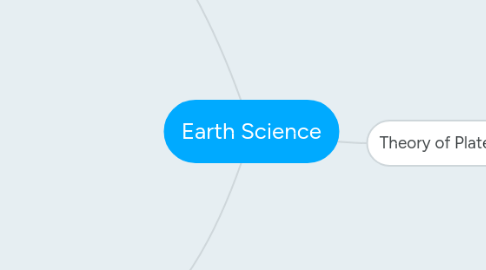
1. Earth's structure
1.1. Distinct properties define Earth’s three main layers: crust, mantle, and core.
1.1.1. The crust is the rigid outer layer that makes up the continents and sea floors.
1.1.2. The lithosphere is a region formed by the crust and the rigid outer layer of the mantle.
1.1.3. The asthenosphere is the fluid-like layer of mantle beneath the lithosphere.
1.1.4. Earth’s centre has two layers: a liquid outer core and a solid inner core.
1.2. Scientists obtain information about the structure of Earth through direct and indirect observations.
1.2.1. Direct observations include analyzing rock directly from Earth’s interior.
1.2.2. Indirect observations include measuring gravitational force differences around the globe to infer the density of material beneath Earth’s surface.
2. Theory of continental drift
2.1. evidence
2.1.1. The surface of Earth moves constantly.
2.1.2. The lithosphere is divided into massive tectonic plates that are pushed and pulled over the asthenosphere.
2.1.3. Continental drift theory argues that the continents have moved slowly since Earth formed.
2.1.4. Fossil and geological evidence support the continental drift theory.
2.1.5. At one time, the continents formed Pangaea, a single huge landmass.
2.2. new evidence
2.2.1. Sea-floor spreading occurs at mid-ocean ridges and subduction occurs at deep ocean trenches.
2.2.2. Heat within Earth creates convection currents in the mantle that help move the plates.
2.2.3. Radioactive dating of core samples confirmed evidence that the sea floor is older the further it is from the ridges.
2.2.4. Magnetic striping patterns in sea floor rock are similar on both sides of an oceanic ridge, suggesting new ocean floor is being created at the ridge.
3. Theory of Plate Tectonics
3.1. Three types of boundaries exist where tectonic plates meet.
3.1.1. Ridges, rifts, volcanoes and earthquakes are created at divergent boundaries, where plates are moving away from each other.
3.1.2. Earthquakes and strike-slip faults are created along transform boundaries, where plates move past each other in opposite directions.
3.1.3. At convergent boundaries (where plates move toward each other), we find mountains, trenches, subduction zones, volcanoes, and earthquakes, depending on the types of plates involved.
3.2. Three factors cause the movement of Earth’s tectonic plates: mantle convection, ridge push, and slab pull.
3.2.1. Uplifted mountains, volcanic belts, and island arcs are found parallel to convergent boundaries.
3.2.2. Ocean trenches lie along convergent boundaries.
3.2.3. Mid-ocean ridges and rift valleys mark divergent boundaries.

